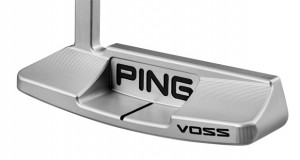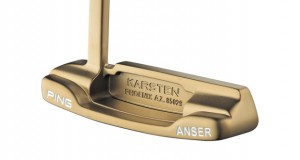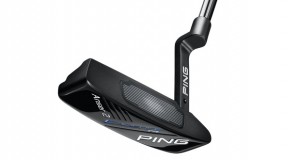We first got acquainted with the PING Nome putter earlier this year at the AT&T Pebble Beach National Pro-Am, a few months before its retail release.
There, inside the PING Tour equipment van, tour representative Matt Rollins showed the new putter off with great enthusiasm. Two weeks later, Hunter Mahan switched to the Nome and promptly won the Accenture Match Play tournament, generating a tidal wave of pre-release publicity for the putter.
Now, the Nome ($249) has been released, and the rest of us mortals get to give it a spin. Does the PING Nome live up to its considerable hype, or does it fall short of the mark? Following is PutterZone.com’s PING Nome putter review.
The Storyline
The Nome is the latest extension of PING’s putter fitting mission, which includes an innovative iPhone app and color-coded fitting specifications. Simply put, PING is going all out when it comes to helping golfers find a better fit.
Accordingly, the Nome putter comes in three different shaft bends, which alters the balance of the putter from face balanced to toe down in varying degrees. These putter fitting options are designed to match the stroke of the player, be it a straight stroke, slight arc or strong arc. The aforementioned iPING putter app can help the golfer ascertain exactly which type of stroke he or she employs.
In the words of PING: “Our research shows that matching your putter to your stroke type is the key to building a consistent stroke and making more putts.”
The Nome also boasts a unique alignment feature, consisting of an arching piece of black anodized aluminum that extends across the crown of the putter. A contrasting white sightline runs through the center of the piece, extending from the rear of head to the leading edge of the face, for one continuous visual thread.
According to PING, this feature is particularly helpful for golfers who draw a putting line around the equator of their ball, as the putter’s sightline can “connect” with the line on the ball with minimal visual interruption.
The Nome putters are precision milled from solid blocks of aluminum at PING’s headquarters in Phoenix, Arizona. Because aluminum doesn’t provide the most durable surface, PING applies a space-age “nanotech” coating to the heads. This coating creates an ultra-durable surface for lasting playability and a firmer feel.
The lightweight aluminum frame incorporates tungsten sole weights that are designed to optimize the center of gravity and elevate the MOI. The total head weight of the nome is 355 grams (the belly version weighs 405 grams). The lie angle is customizable.
The View from PutterZone.com
The Nome’s distinctive alignment feature was actually first incorporated into last year’s PING Sydney mallet. But whereas the Sydney was rather eccentric—with its red crown and flying elbows—the Nome looks sleek and utterly composed.
The alignment feature is a winner. I love how the sightline spans the entire width of the putter head, from the very rear to leading edge of the face, where it visually intersects with the ball at address. On some putters, the sightlines look more like an obligation or afterthought. On the Nome, the sightline is a true centerpiece, giving the golfer a vivid directional cue for improved alignment and accuracy.
The feel of the Nome is quite crisp, both in the hands and ears. This is definitely a putter for golfers who prefer a sense of firmness off the face.
As a passionate proponent of putter fitting (see: Putter Perfection), I’m a big fan of what PING is doing to bring putter fitting to the mainstream. I use the iPING putter app all the time. Not only does this app provide fitting insights, it also provides a reliable and ongoing gauge of your stroke consistency.
The Nome fits seamlessly into this fitting picture. The color-coded shaft band features the established PING icons for different stroke types—straight, slight arc and strong arc. If you know which type of stroke you employ, you can match the balance of your model accordingly. Or you can use the app to discover your stroke type, and go from there.
I tried the strong arc model. Interestingly—or oddly?—the toe hang of the strong-arc Nome is much less than the hang of the strong-arc PING Anser putter. I am told that the degrees of hang on the Nome are simply not as aggressive as those found in the Anser line.
The rear topline of the Nome arches inward toward the target along the heel and toe. Aesthetically, it looks great. But to my eye, this curvature does create a bit of optical competition when it comes to squaring the face. It obviously isn’t an issue for Hunter Mahan and many others, but I might like to see a symmetrical topline with the rear edge parallel to the leading edge.
With its 355-gram head, the Nome is on the heavier side, but it doesn’t feel weighty to me. The weight is largely distributed along the perimeter, and there’s an inherent sense of balance and stability through the stroke.
The overall finish and presentation of the Nome are top notch. Little touches such as the fine milling lines along the face, flange and alignment arch add dimension to the visual feel of the putter. The sturdy headcover befits the price point with its magnetic closure and rich embroidery.
The Bottom Line
The Nome advances PING’s effort to bring putter fitting to the mainstream. With its sleek look and standout alignment properties, the Nome could be considered PING’s finest mallet to date.
 PutterZone – Best Putter Reviews
PutterZone – Best Putter Reviews





